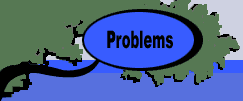Three products can be produced at two machining
centers during a one-week period. The products may be
produced in fractional amounts. The linear relationships
describing this situation are listed below. The variables
and constraints are:
- A, B and C are the amounts of the three products in units.
The revenue per unit is $20, $30 and $25 respectively.
- R1 and R2 are the amounts of raw materials used in kilograms.
The cost per kilogram is $6 and $8 respectively.
- Two machines perform operations on the product. Each
machine is available for 40 hours during the week. The operation
times are shown in the machine constraints.
The market limits production in each week for
A, B and C to 10, 20 and 10 units respectively.
Based on this information a linear programming
model is shown below. All the variables in the above model may
assume fractional values.
Max. Profit: P = 20A + 30B + 25C - 6R1 - 8R2
Subject to:
Time limit on machine 1: 5A + 8B + 10C <= 40 (hours)
Time limit on machine 2: 8A + 6B + 2C <= 40
(hours)
Raw material 1 used: R1 = 1A + 2B + 0.75C
Raw material 2 used: R2 = 0.5A + 1B + 0.5C
Market Limits
and nonnegativity:
0 <= A <= 10,
0 <= B <= 20, 0 <= C <= 10.
The following paragraphs describe variations
on this situation. You are to complete the model by adding additional
variables and constraints to the equations and inequalities
described above. Show any changes or additions required. Unless
stated the goal is to maximize profit. The models are to determine
the types and amounts of each product to produce and the amounts
of raw materials to purchase. The variations are not cumulative.
Find the solution to each problem.
a. There is a fixed cost of $100
for producing each product. That is, if we produce only one
of the three products the profit is reduced by $100. If we produce
two of the products, the profit is reduced by $200. If we produce
all three products the profit is reduced by $300. For example
if A = 0, there is no charge for that product, but if A >
0, the charge is $100.
b. There is a limit of 40 hours
usage per week for each machine. There is a setup time
for each product that is 5 hours per setup on machine 1, and
3 hours per setup on machine 2. The setup times reduce
the hours available to produce the products. The setup times
are the same for each product.
c. A lucrative new market opens
for product A. The new market can sell up to 10 additional units
of A for revenue of $25 per unit. Management requires that the
original market for A which returns a revenue of $20 per unit
must be served before any units are sold in the new market.
d. In addition to the machines you
already own, you are allowed to purchase up to two more machines
of each type. Each machine provides a work capacity of 40 hours
per week. To add one additional machine of type 1 the cost is
$50 per week. To add a third machine of type 1, the cost is
$45 per week. To add one additional machine of type 2 the cost
is $75 per week. To add a third machine of type 2, the cost
is $60 per week.
e. The raw material supplier offers
the following purchase plan for raw materials. The plan is available
for R1 and R2 separately. When the weekly order quantity is
below 50 units, the raw material cost is as given in the problem
statement. For order quantities above the 50, the raw materials
can be purchased at a 25% discount. The discount applies to
all units purchased, not just the number purchased above 50.
For example, R1 costs $6 per unit if the amount
purchased is less than 50. To purchase 40 units would cost $240.
If the company purchases 60 units there is a 25% discount. Then
the unit cost would be $4.50 per unit. To purchase 60 units,
for example, the cost would be 4.5*60 or $270. Under such a
plan it might be advisable for the company to purchase more
raw material than necessary for production.
|



